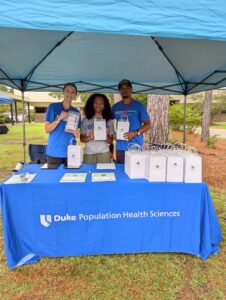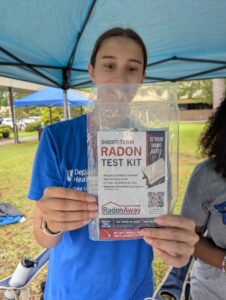Learn About the CLOVER Study
go.ncsu.edu/readext?1088257
en Español / em Português
El inglés es el idioma de control de esta página. En la medida en que haya algún conflicto entre la traducción al inglés y la traducción, el inglés prevalece.
Al hacer clic en el enlace de traducción se activa un servicio de traducción gratuito para convertir la página al español. Al igual que con cualquier traducción por Internet, la conversión no es sensible al contexto y puede que no traduzca el texto en su significado original. NC State Extension no garantiza la exactitud del texto traducido. Por favor, tenga en cuenta que algunas aplicaciones y/o servicios pueden no funcionar como se espera cuando se traducen.
Português
Inglês é o idioma de controle desta página. Na medida que haja algum conflito entre o texto original em Inglês e a tradução, o Inglês prevalece.
Ao clicar no link de tradução, um serviço gratuito de tradução será ativado para converter a página para o Português. Como em qualquer tradução pela internet, a conversão não é sensivel ao contexto e pode não ocorrer a tradução para o significado orginal. O serviço de Extensão da Carolina do Norte (NC State Extension) não garante a exatidão do texto traduzido. Por favor, observe que algumas funções ou serviços podem não funcionar como esperado após a tradução.
English
English is the controlling language of this page. To the extent there is any conflict between the English text and the translation, English controls.
Clicking on the translation link activates a free translation service to convert the page to Spanish. As with any Internet translation, the conversion is not context-sensitive and may not translate the text to its original meaning. NC State Extension does not guarantee the accuracy of the translated text. Please note that some applications and/or services may not function as expected when translated.
Collapse ▲

Photo info: (from left to right) are Mary Srivastava, Research Assistant; Oana Djibom, Undergraduate Intern; and Jules Iradukunda, Research Assistant with the CLOVER project.
At the recent Brunswick County Health and Wellness Fair held at the Government Center, I stopped by an exhibit about the CLOVER Study. This stands for Climate Impact on Lung Cancer via Exposure to Radon and is a research study by a group at Duke University.
This team from the Department of Population Health Sciences is looking at how radon exposure – worsened by climate-related changes – affects lung cancer outcomes in North Carolina. They are particularly looking at communities that have been historically underrepresented in environmental health research.
I was surprised to see them here in Brunswick County, because I didn’t think radon was a big problem in our area. The team confirmed that although Brunswick County has a lower average radon risk compared to other regions in North Carolina, radon levels can vary significantly from home to home and area to area due to factors like soil composition, building materials, and ventilation. Even homes located next to each other can have drastically different radon concentrations.
Radon is a radioactive gas that forms naturally through the breakdown of uranium in soil and rock. It can seep into homes through cracks in foundations, basements, or well water – and it has no color, smell, or taste. Exposure to radon increases over time, especially in poorly ventilated or older homes. Children are especially vulnerable; their risk is twice as high as adults when exposed to the same levels. Because it is a naturally occurring gas, complete elimination of radon is not possible, however taking action to reduce your exposure to radon can be done.
Why even think about radon? Radon accounts for 15% of the lung cancer cases in the United States. This makes radon the seconding leading cause of lung cancer after smoking and the leading cause of lung cancer among nonsmokers. Because radon and tobacco smoke have a synergistic effect, smokers exposed to radon are 25 times more likely to develop lung cancer than non-smokers.
Even though we haven’t thought much about radon in this part of NC, climate change may be increasing our risk of radon exposure through various pathways. Higher temperatures and longer AC use reduce indoor-outdoor air exchange, allows radon concentrations to accumulate in indoor air. Heavy rainfall and flooding can push more radon from the soil into homes. Furthermore, due to high temperatures, people are spending more time indoors, therefore increasing their exposure to radon concentrations.
Because radon is invisible and odorless, the only way to know your home’s radon level is to test. Radon levels are measured in picocuries per liter (pCi/L), a unit that reflects the radioactive decay of radon gas particles in air. The higher the pCi/L, the greater the concentration of radioactive radon gas in the air.
The EPA recommends mediation if indoor radon levels are at or above 4.0 pCi/L. The good news is that the highest tested level of radon found in Brunswick County so far was 3.6 pCi/L. However, this measurement should not be used to predict whether your home will have elevated radon levels or not. Radon levels are site specific and the only way to know the radon level in a building is to test it.
To measure radon in homes, short-term test kits (typically taking 3–7 days) are placed in the lowest livable level of a home, away from drafts, windows, and exterior walls. These kits absorb airborne particles and are then mailed to a lab for analysis. The CLOVER Study provides these kits for free to North Carolina residents.
If you’d like to get a free test, you can reach out to the folks at the CLOVER study at Duke. You must be willing to complete a radon test in your home (it’s a simple test you do yourself). Then they will have you answer a short survey about your home’s characteristics, health and risk factors. A bonus: after the test and survey are received you will get a $10 VISA card for helping with the study and you’ll get your radon test results. 
For more information you can call them at 919 660-7911 or email CLOVER@duke.edu.
Syracuse is a Family and Consumer Science team member and can be reached at N.C. Cooperative Extension, Brunswick County Center 910-253-2610 or by email at clsyracu@ncsu.edu



